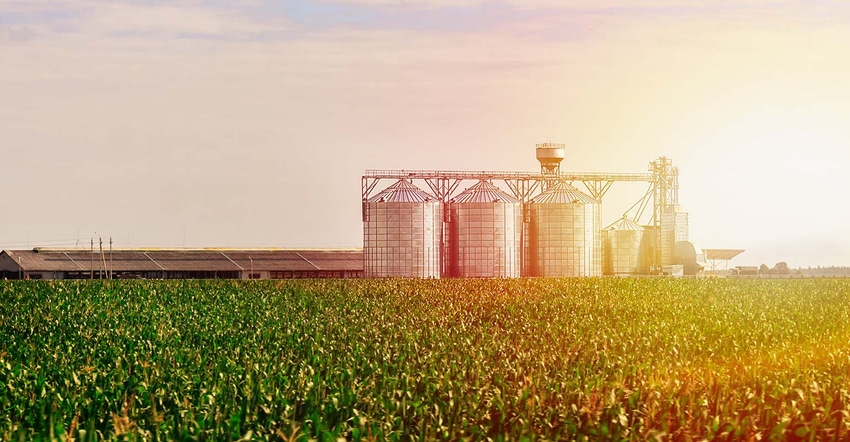
When it comes to grain marketing, sometimes a bird in the hand is worth two in the bush.
That was particularly true for the flood-ravaged 2019 corn and soybean crops. Selling off the combine– the bird in hand – proved more profitable than trying to add to gains by using storage or most other post-harvest marketing strategies.
Below-average yields and the end to the worst of the trade war with China fueled hopes prices would continue to rise into 2020. Instead, the world locked down with the coronavirus pandemic that weakened demand and sent potential buyers into their bunkers.
As a result, all but one of the strategies included in our annual survey of marketing results lost money, after costs, compared to the harvest price.
The sole survivor, for both corn and soybeans, was the storage hedge. This strategy requires protecting inventory stored on-farm by selling futures or hedge-to-arrive contracts for deferred delivery. In the case of the study, this assumed July contracts were used to gain from appreciation of basis, with all studied positions liquidated near the expiration of July options towards the end of June.
The results speak to the unusual nature of the 2019 marketing year. While corn hedged at harvest is a consistent winner, it’s less successful for soybeans. But even the fact it turned a paper profit for corn was a bit of a surprise. That’s because storage hedges typically are less successful in short-crop years like 2019. Basis that starts the storage period strong has less chance to appreciate than it does during years when the gulf between cash and futures is wide.
Most of the time, of course, yields are good and harvest basis is indeed weak. Storing for basis gains alone hasn’t been the most profitable corn strategy in the study, which covers the 1985 through 2019 marketing years. But it is the most consistent, netting a return over the harvest price at the nine locations examined two over every three years.
The storage hedge for 2019 corn returned 13 cents a bushel after costs for on-farm storage. Those expenses don’t include depreciation on bins, which can vary widely, but do cover handling, in addition to interest paid on loans because grain isn’t sold at harvest to raise cash.
One reason the hedge paid off was due to the fairly large spread between December 2019 and July 2020 corn futures. Carry of around 22 cents amounted to around 2.5 cents a month, enough to cover on-farm costs.
But the storage hedge for soybeans was the real “man bites dog” story for 2019 crops. Typically the long-term storage hedge doesn’t work very well for soybeans for a couple of reasons. First, there normally isn’t a lot of carry in soybean futures. The market wants those beans sooner, not later. Shippers know they’ve got the move the crop in the months after harvest, before the second wave of soybeans from South America takes control of trade. This is also why basis gains tend to come more quickly in soybeans.
The trade war with China upended both of these tendencies. As a result, November 2019/July 2020 carry topped 50 cents, a boon for on-farm hedgers. The storage hedge averaged 28 cents for soybeans at the locations we studied. That wasn’t enough to buy many pick-up trucks. But it was a whole lot better than the alternatives. Unhedged soybean storage on the farm lost 50 cents, while commercial storage was 93 cents in the red.
It’s too early to tell if history will repeat for 2020 crops, but there are some clues. Corn carries increased this summer to levels rivalling 2019 and could get wider thanks to storage charges on grain that can be delivered against futures contracts. Projections for large supplies could also weaken harvest basis.
Soybean carries haven’t followed suit with corn, a signal the market may expect soybeans to once again start moving quickly after harvest due to the Phase One trade deal with China. But, as the last year demonstrated emphatically, a lot can change over the course of the marketing year.
In 2020 the uncertainty includes just how tight storage will be this fall. Bumper crops reported by USDA Aug.12 in its first monthly production estimate threatened old and new crop inventories that would overfill the nation's storage facilities
The "derecho" windstorm that flattened fields -- and grain bins -- from South Dakota to Ohio, complicates any prediction. But unless crop losses were truly catastrophic, storage could still be tight in many areas, resulting in weak basis that keeps grain off the market.
Click the download button below to download the 2020 Storage Trends Summary.
Clicks these links for more information:
https://www.farmprogress.com/sites/farmprogress.com/files/Toledo_1.pdf
https://www.farmprogress.com/sites/farmprogress.com/files/Omaha_1.pdf
https://www.farmprogress.com/sites/farmprogress.com/files/NorthCentralIowa_1.pdf
https://www.farmprogress.com.com/sites/farmprogress.com/files/Minneapolis_1.pdf
https://www.farmprogress.com/sites/farmprogress.com/files/KansasCity_1.pdf
https://www.farmprogress.com/sites/farmprogress.com/files/EvansvilleCorn_LouisvilleSoybeans_1.pdf
https://www.farmprogress.com/sites/farmprogress.com/files/DenverCorn_1.pdf
https://www.farmprogress.com/sites/farmprogress.com/files/CentralIndiana_1.pdf
https://www.farmprogress.com/sites/farmprogress.com/files/CentralIllinois_1.pdf
https://www.farmprogress.com/sites/farmprogress.com/files/StorageTrends2020Summary.pdf
Knorr writes from Chicago, Ill. Email him at [email protected]
The opinions of the author are not necessarily those of Farm Futures or Farm Progress.
About the Author(s)
You May Also Like






